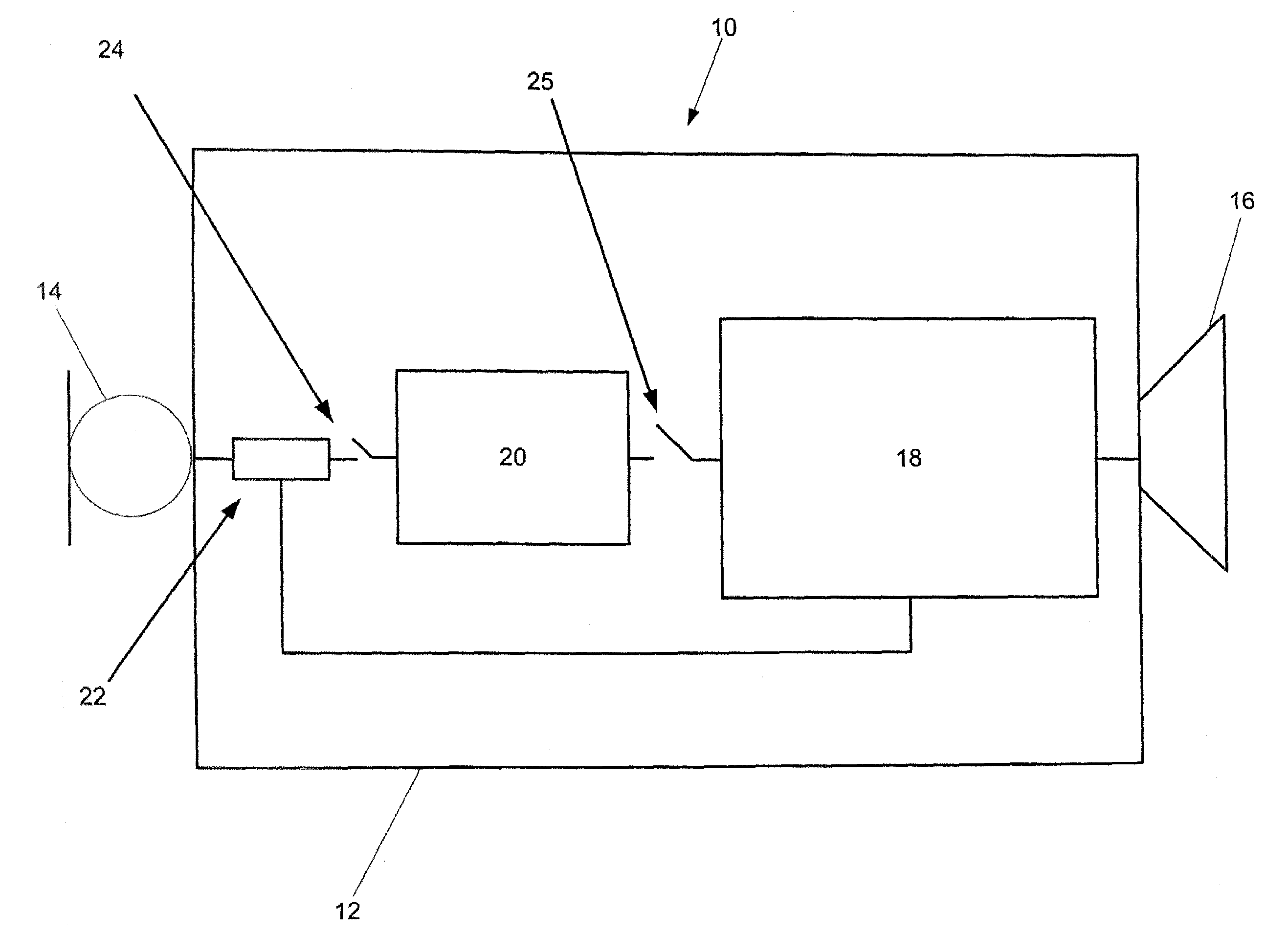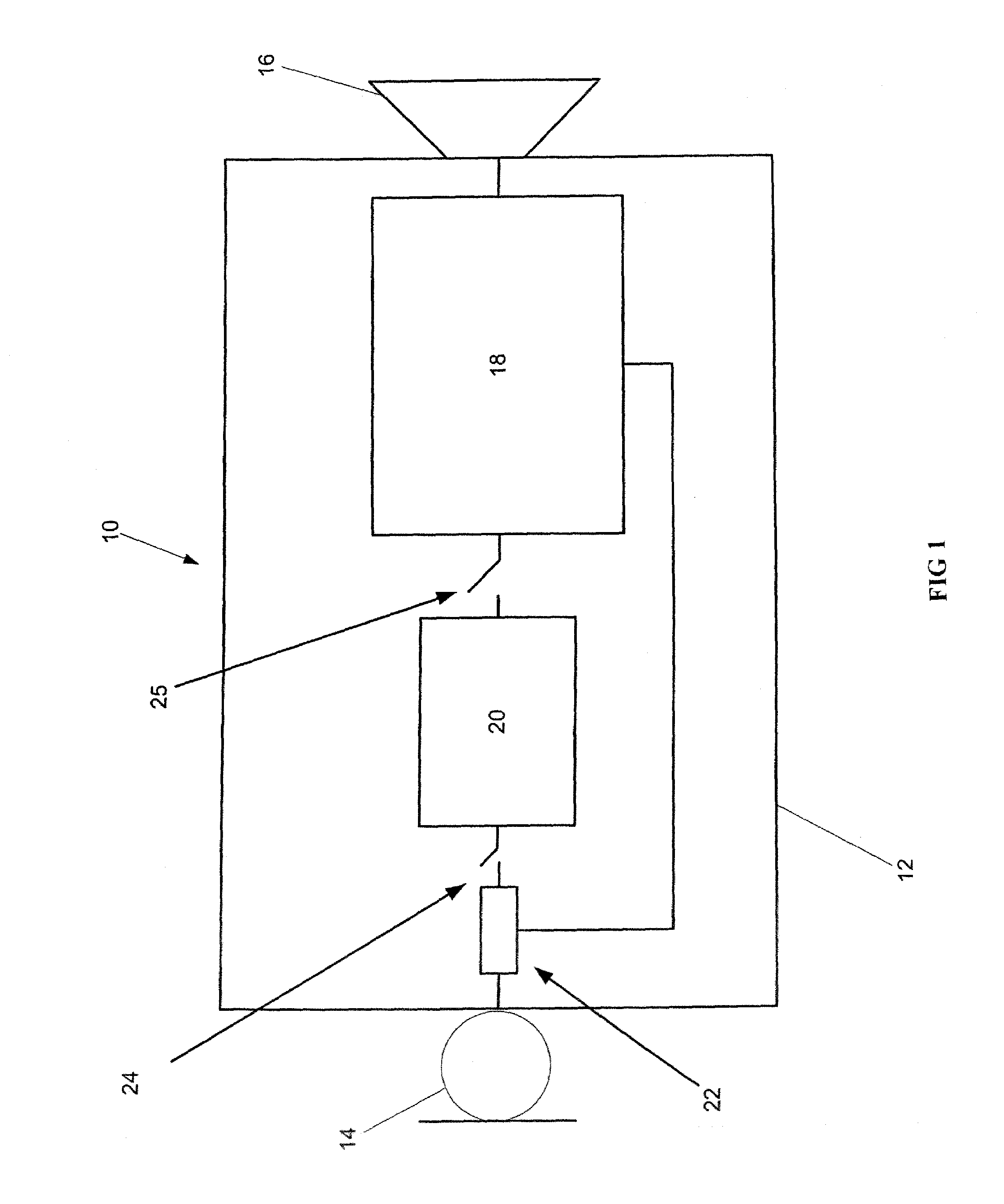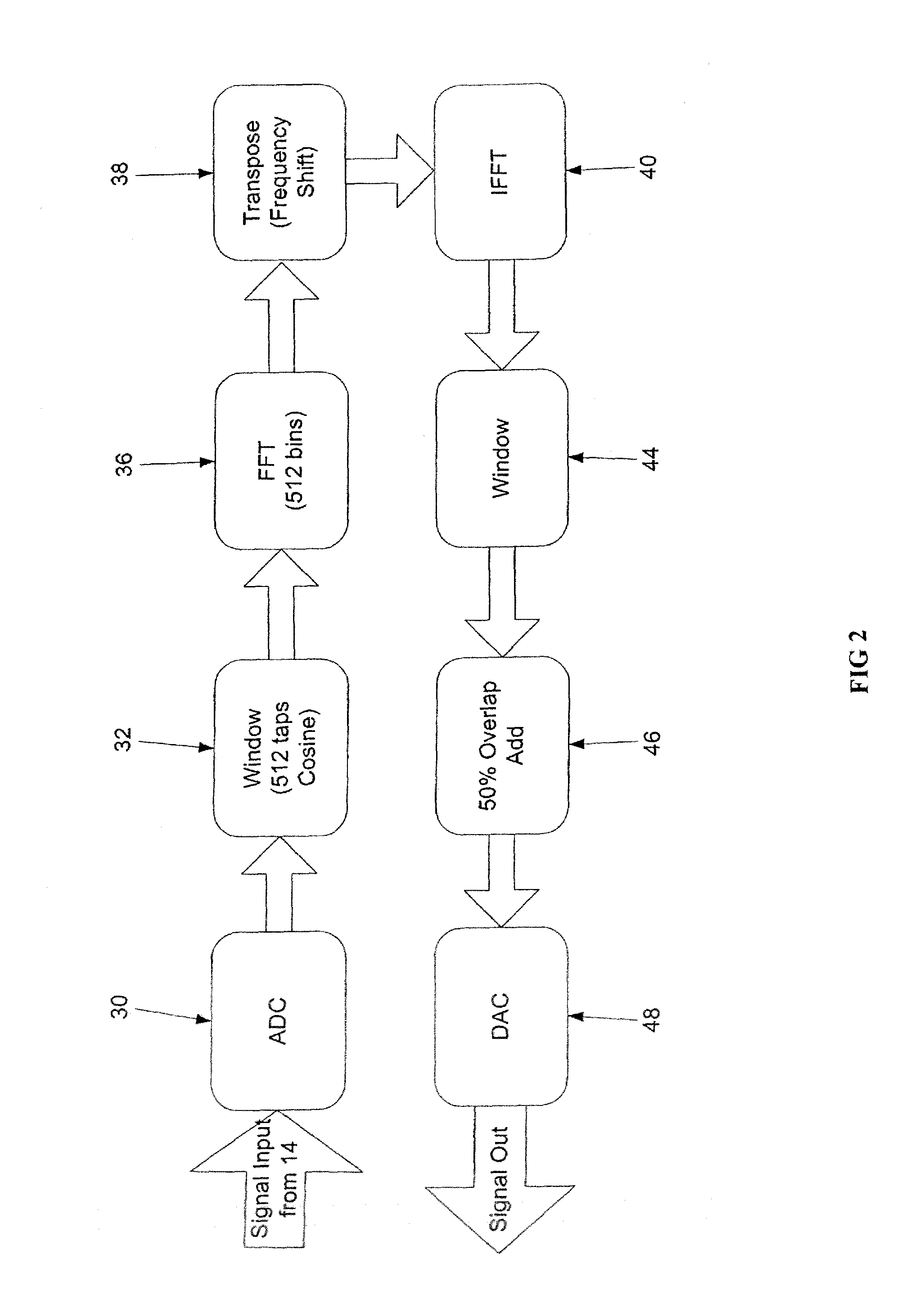Sound enhancement for hearing-impaired listeners
a technology for listening and hearing impairment, applied in the field of sound enhancement for hearingimpaired listeners, can solve the problems of reducing the listener's ability to parse the sounds of interest from competing background sounds, and reducing the listener's ability to parse the sounds of interest significantly
- Summary
- Abstract
- Description
- Claims
- Application Information
AI Technical Summary
Benefits of technology
Problems solved by technology
Method used
Image
Examples
Embodiment Construction
[0069]In the drawings, reference numeral 10 generally designates equipment, in accordance with an embodiment of the invention, for enhancing sound heard by a hearing-impaired listener. The equipment 10 includes a housing 12 which houses hearing-aid electronics and components.
[0070]An acoustic sensor 14 is arranged on the housing for sensing acoustic signals. A sound delivery medium 16 is carried by the housing 12 and relays sound to the eardrum of a listener's ear carrying the equipment 10.
[0071]The components of the equipment 10 include a primary signal processor 18 which perform conventional hearing aid signal processing. An auxiliary signal processor 20 is interposed between the primary signal processor 18 and the sensor 14.
[0072]The auxiliary signal processor 20 is, optionally, controlled by a discriminator 22 which determines whether or not there are components of sound having a high energy frequency above a predetermined threshold in the high frequency band. In the preferred i...
PUM
 Login to View More
Login to View More Abstract
Description
Claims
Application Information
 Login to View More
Login to View More - R&D
- Intellectual Property
- Life Sciences
- Materials
- Tech Scout
- Unparalleled Data Quality
- Higher Quality Content
- 60% Fewer Hallucinations
Browse by: Latest US Patents, China's latest patents, Technical Efficacy Thesaurus, Application Domain, Technology Topic, Popular Technical Reports.
© 2025 PatSnap. All rights reserved.Legal|Privacy policy|Modern Slavery Act Transparency Statement|Sitemap|About US| Contact US: help@patsnap.com



